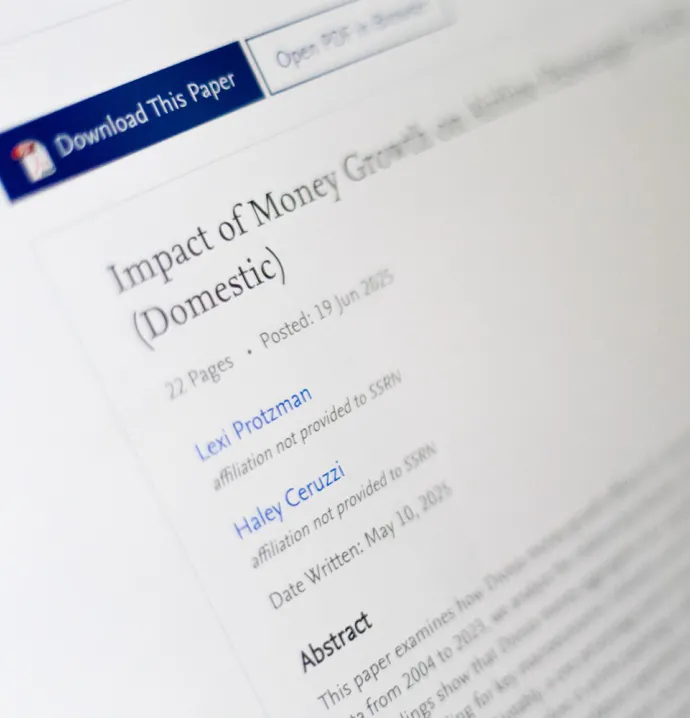The long-term effects from working from home
The long-term effects from working from home
The COVID-19 pandemic has disrupted life in every sense, particularly for businesses. Offices may never be the same. A variety of data shows that even after the pandemic ends, many companies expect their employees will work from home at least a few days a week.
These dramatic shifts could have lasting implications for corporate America. Will competition for office space in urban hubs be less fierce? Will companies still pursue open-office designs intended to encourage collaboration? Or will these changes recede with the pandemic?
This isn’t the first time we’ve seen dramatic shifts in the workplace. During the Great Depression in the late 1920s and 1930s, businesses were forced to adhere to new regulations and several new governmental agencies were formed. In the 1950s, jets changed how people traveled. Suddenly, businesses could have face-to-face meetings across countries and continents. Similarly, in the 1980s, cell phones connected people on the go. And in 1991, the world wide web altered every facet of business.
The disruption from COVID-19 is perhaps the most sudden, though, particularly for day-to-day life. The pandemic has moved people to remote work, acting as a sort of proving ground for the rising work-from-home movement. And despite the drastic transition, it’s been largely a successful change.
“People have definitely proven that they can work from home successfully,” said Rusty Guay, UNI associate professor of management. “So for people that really want to continue doing that in the future and have a job where they can, it’s much more realistic that the option exists. COVID-19 really forced a lot of workplaces to become more accommodating and flexible when it comes to stuff like remote working, and I could see that continuing.”
Jamal White (Marketing and Management ’18), a human resources manager at Procter and Gamble, has seen the benefits of it firsthand. The flexibility of working from wherever, whether that’s at home or in the office, can help employees thrive and increase productivity.
“With people able to virtually work from home, they’re no longer restricted to and limited to where the office location is,” White said. “There used to be the idea that you needed to be in the office, to be present with your team, to work together. We found that’s not true. I think we’re going to see a shift in the management of employee relations and the creation of a more flexible work environment.”
In a June survey, nearly two-thirds of American workers who said their jobs allowed them to work remotely told researchers they enjoyed working from home. Surveys of businesses around the same time period found employers predicted anywhere from 27-40% of their workers would continue working remotely, even if just a few days a week, after the pandemic.
There used to be the idea that you needed to be in the office, to be present with your team, to work together. We found that’s not true. I think we’re going to see a shift in the management of employee relations and the creation of a more flexible work environment."Jamal White (Marketing and Management '18)Human Resources Manager, Procter and Gamble
There are some challenges to working from home, though. There’s a need for human interaction, which can be difficult to achieve virtually. According to a YouGov survey from April, the top challenges to working from home included distractions by other family members in the house, creating interpersonal relationships with coworkers and finding a proper workplace.
There’s also the crucial issue of burnout. Remote work blurs the line between work and life, which can lead to long hours and a reluctance to take days off for rest and recovery.
“The inability to disconnect from work can be a huge issue that will likely lead to some burnout from some people,” Guay said. “I was bad at that before, but now I often start working from my kitchen office even earlier in the morning and longer into the night before.”
For employers, the challenges are flipped — being sure employees aren’t overworked, avoiding over-communicating and project management. But for the most part, the transition has been successful for employers. According to Arizent, a business information company, a vast majority of employers reported that their organization’s “digital preparedness” for the transition to remote was positive (43% rated “excellent” and 40% “good”). Only a small minority of employers reported negative experiences (4% “poor” and 2% “terrible”).
Despite some of the challenges, UNI professor of management Atul Mitra believes remote work might be here to stay in the aftermath of COVID-19.
“People who have learned they enjoy working from home may ask if they can continue to do so even after this is over,” Mitra said. “Remote work might make up a larger part of the workforce moving forwards.
“At the same time, we might see the rise of a four-day workweek as well. Co-working spaces were previously seen as essential for work but having access to technology that allows virtual conferencing has proved this isn’t the case. No matter what, I think we will see significant impacts on the work environment.”
Guay said it’s still too early to speculate what other long-term effects could be, but he couldn’t help but look back to his past life in human resources.
“I spent 10 years in recruiting and interviewing thousands of people during those years,” Guay said. “That’s a lot of handshakes with applications. I would not be a bit surprised if that is one interview tradition that never returns.”
While the jury is still out on the impact of this work from home experiment, a July 2020 Wall Street Journal article reports firms calling employees back to the office to combat falling employee productivity. New pivots appear to be on the horizon.




